3.1. Regular and semiregular tilings. The underlying pattern of the structure in Figure 10 is the regular tiling 6,6,6. The structure in Figure 12 has the semiregular (or Archimedean) tiling 4,3,4,3,3 as the underlying pattern. These tilings are composed of regular polygons such that at the vertices of each tile you will find the same configuration of regular polygons. And therefore the same number of tiles meet at each vertex. For the structure in Figure 10 this number is three, which is an odd number. And because this is an odd number we will get a knot figure as a hole in our interwoven layer structure (see Figure 8c). When this number is even we will get a combination of two or more rings (see Figure 8b).
At each vertex of the underlying pattern of the structure in Figure 12 we have 5 polygons (going around a vertex we see a square, a triangle, a square, and two triangles). Also in this tiling the number of polygons in each vertex is odd and so the resulting interwoven layer structure will again be a single surface, because of the knot-shaped holes. Other such surfaces are shown in Figures 13, 14, and 15.
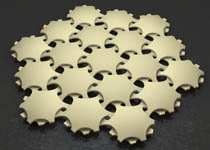

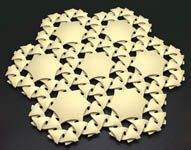
Figure 13: Tiling 6,6,6
Figure 14: Tiling 8,8,4
Figure 15: Tiling 6,3,3,3,3
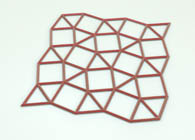
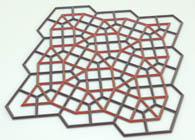
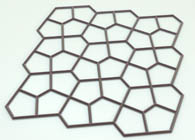
Figure 16a: Tiling 4,3,4,3,3
Figure 16b: Creating the dual
Figure 16c: Dual of 4,3,4,3,3
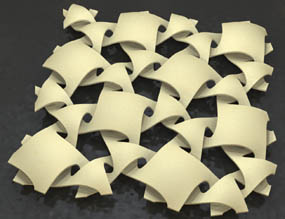
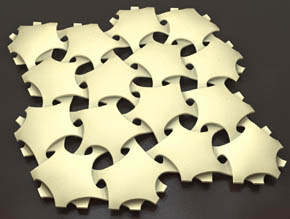
Figure 17: Base: tiling 4,3,4,3,3
Figure 18: Base: dual of 4,3,4,3,3
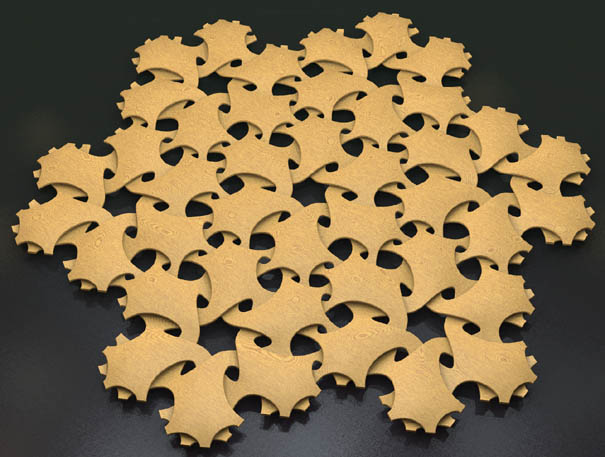
Figure 19: Base: dual of 6,3,3,3,3
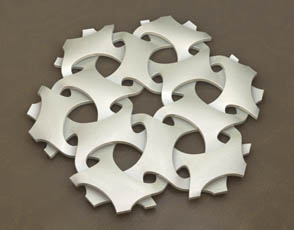
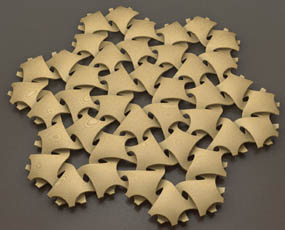
Figure 20: Base: dual of 6,3,6,3
Figure 21: Base: dual of 6,4,3,4